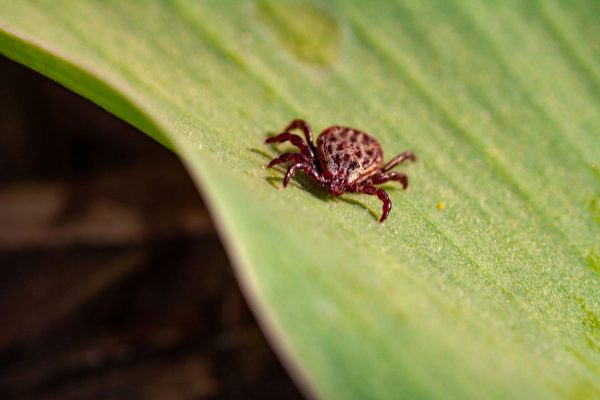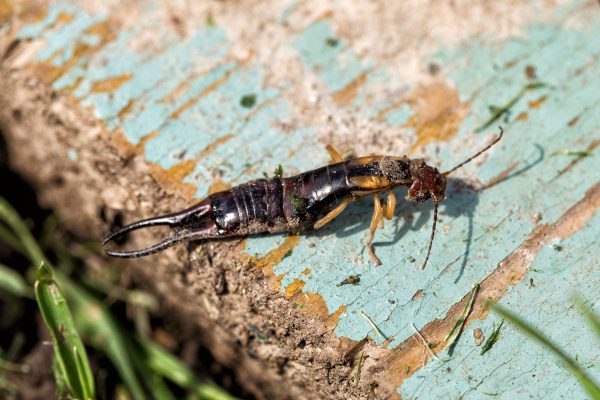If you see a bald-faced hornet's nest, you will be amazed at how big it can get -about the size of a basketball! This might leave you wondering how many hornets are living inside a fully developed nest. We tried to find out the numbers, and here's what our research revealed.
A full-capacity bald-faced hornet's nest can have around 700 hornets living inside it. The nest will start small, with just the queen and a few workers living there. The workers will gradually expand it as the queen continues to breed and increase the population. The nest can be as big as a basketball and hold more than 700 worker hornets within two months.
Do you want to know more about how the bald-faced hornets reproduce and create nests? Read on as we discuss more about this interesting species of wasp.
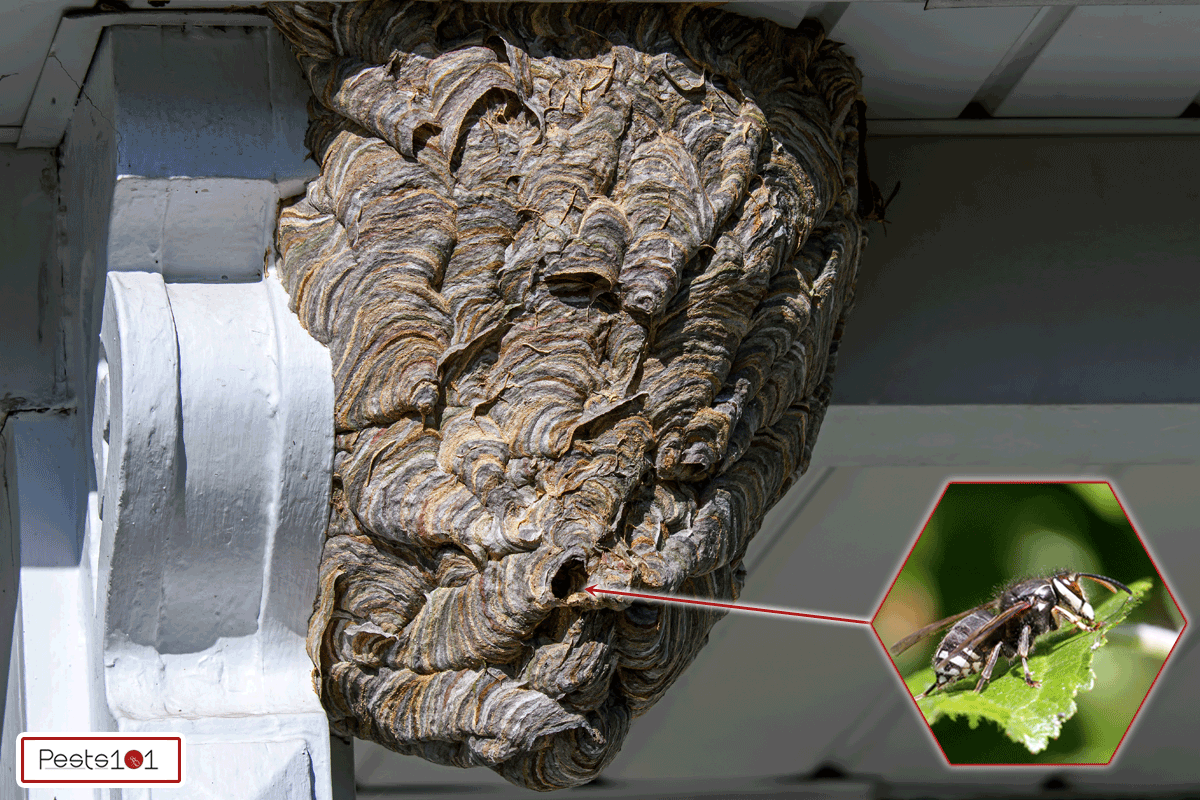
How Many Hornets Do You Get In A Nest?
A bald-faced hornet's nest can hold around 400 and as many as 700 workers when the nest has grown to its maximum size of about 23 inches in length. During the day, there will be fewer hornets inside the nest because the workers will be out gathering food.
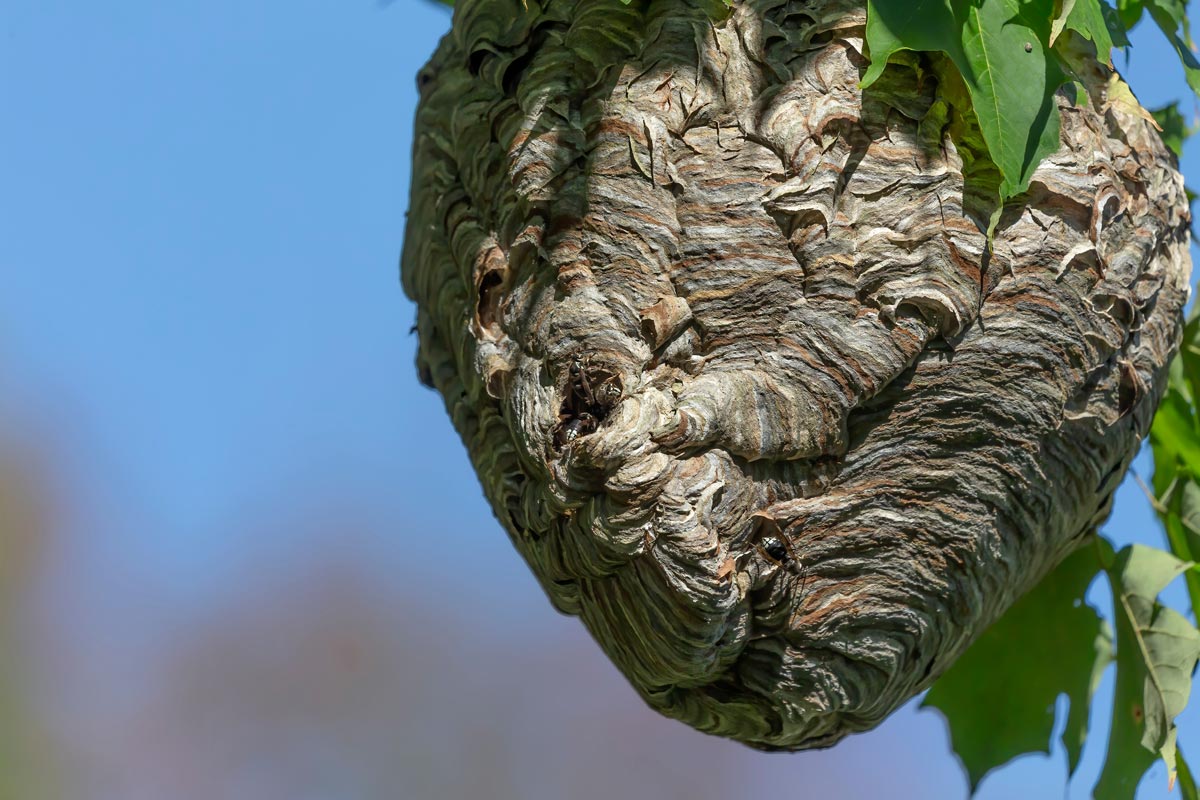
During the night, they will all retreat inside the nest to rest, partly because they have very low visibility at night. The workers will be working inside tending to the larvae or expanding the structure of the nest.
Inside a fully-developed nest will reside one queen, around 200-400 infertile worker females, and male worker hornets. During the last parts of the reproductive period, the queen will breed fertile female hornets to continue the creation of new colonies.
The paper-like nest is made up of chewed wood fibers mixed with the saliva of the worker hornets. Although the nest looks fragile, it is actually very sturdy and durable, enough to withstand rain, wind, and even hail.
Inside the nest are several layers of celled combs similar to a beehive. At the bottom of the nest is one single opening where the worker hornets will fly out at the break of dawn to gather food and fly back in to rest at night.
There will always be several worker hornets guarding the entrance of the nest as they can be very territorial and aggressive to intruders.
How Many Queens Are In A Bald-Faced Hornet's Nest?
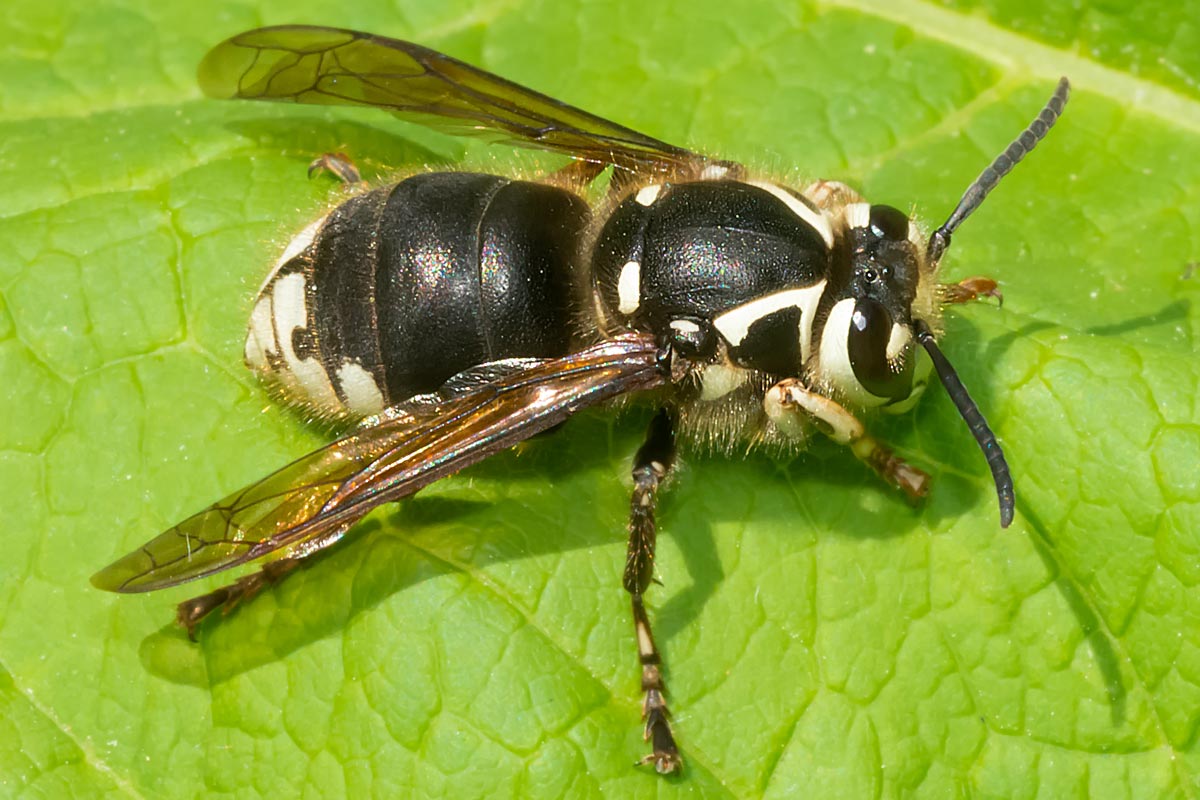
Much like bees, bald-faced hornets only have one queen in a nest that dominates the colony. There will be other female hornets living with her in the nest but these are all infertile female workers. Hierarchy is very important in the colony to maintain order and productivity.
You can differentiate the queen from the other hornets by its size. The queen will be around 3/4-inch while the subordinate workers are generally around 1/2-inch in size.
Bald faced-hornets have a black body with a white pattern on their face. They also have two slanted white lines (like shoulder blades) running from their head towards the mid section.
How Long Does A Bald-Faced Hornet Nest Last?
A bald-faced hornet's nest will last up to 1 year because this is usually the extent of their lifespan. The life cycle of a bald-faced hornet can be quite tragic because by wintertime, only the fertilized females will hibernate and the rest of the colony, including the queen, will either die of old age or of freezing temperatures. This species of wasps only thrive in warm weather.
The life cycle of a bald-faced hornet has three stages: the founding stage, the ergonomic stage, and the reproductive stage. These three stages happen in annual cycling which starts during springtime and ends around Sepetember, after which the fertilized females start hibernation.
Founding Stage
The founding stage starts around spring and early summer which is around April. It starts the moment a fertilized female wakes up from hibernation. She will fly around to find a spot where she wants to build her nest. She will produce her first larvae on her own and nurse them to maturity by herself.
It will take six days for the eggs to hatch, eight days for the larvae to nourish, and nine to ten days for them to mature and become fully functioning worker hornets. These will be her first batch of workers that will help her build the nest.
Ergonomic Stage
This stage is when the queen and the workers are focused on building the population of the colony and expanding the structure of the nest. The queen is focused on producing more eggs and the worker hornets take care of the larvae, gather food, guard the entrance, and expand the nest.
The ergonomic stage starts around April and ends in early October.
Reproductive Stage
The reproductive stage overlaps with the ergonomic stage and starts around mid-July. This is the time when the colony feels it is time to start producing fertile members of the colony. Both workers and reproductive will be raised at the same time which will limit the size of the worker hornets being produced.
What Temperature Do Hornets Stop Flying?
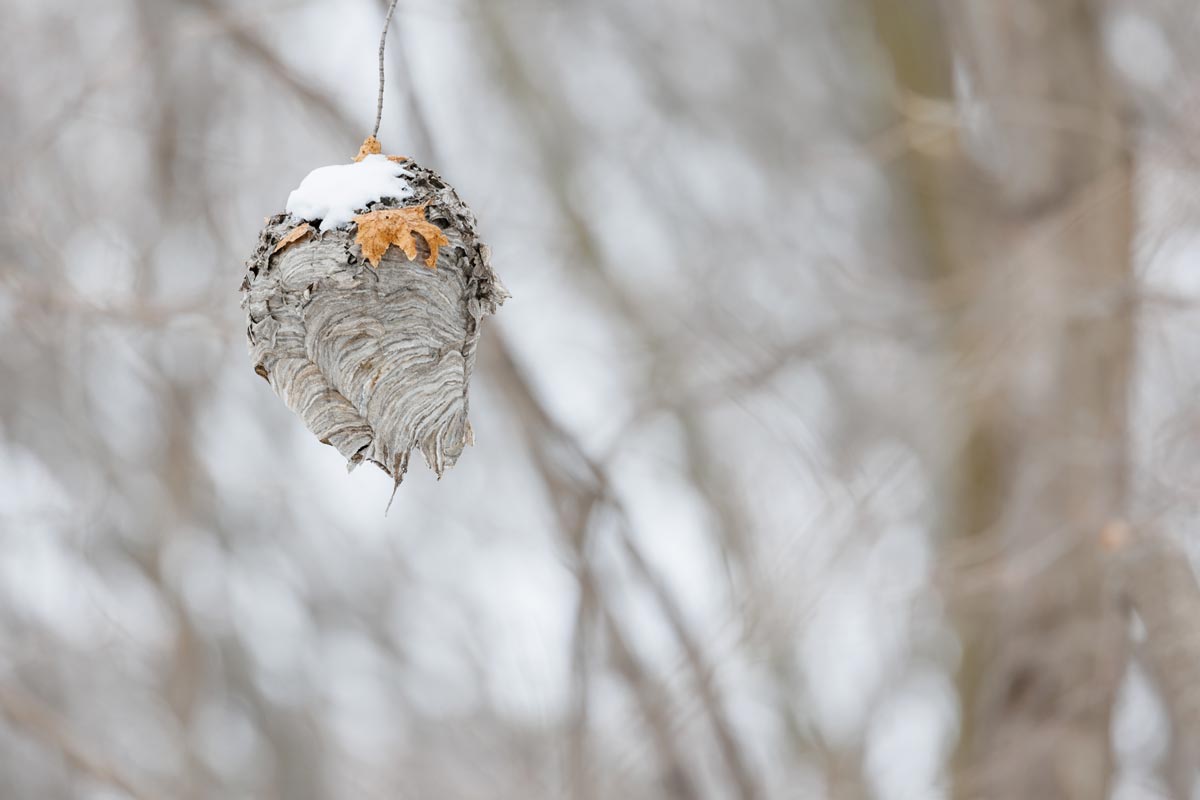
Generally, wasps and hornets can't fly when the temperature hits below 50 degrees. The fertile female hornets hide and overwinter in between old and rotten logs, around eaves, and roof gaps to protect themselves.
They will only wake up at the crack of spring and summertime when the temperature is warmer.
When hornets start to hibernate, they will completely abandon their nest. It is, therefore, safe to remove a hornet's nest once it is completely abandoned because the rest of the workers would have already died of freezing temperatures.
Unlike bees, bald-faced hornets do not return to their old nests. Instead, the new queen finds a new spot and builds a new one.
Should I Remove A Bald-Faced Hornet's Nest?
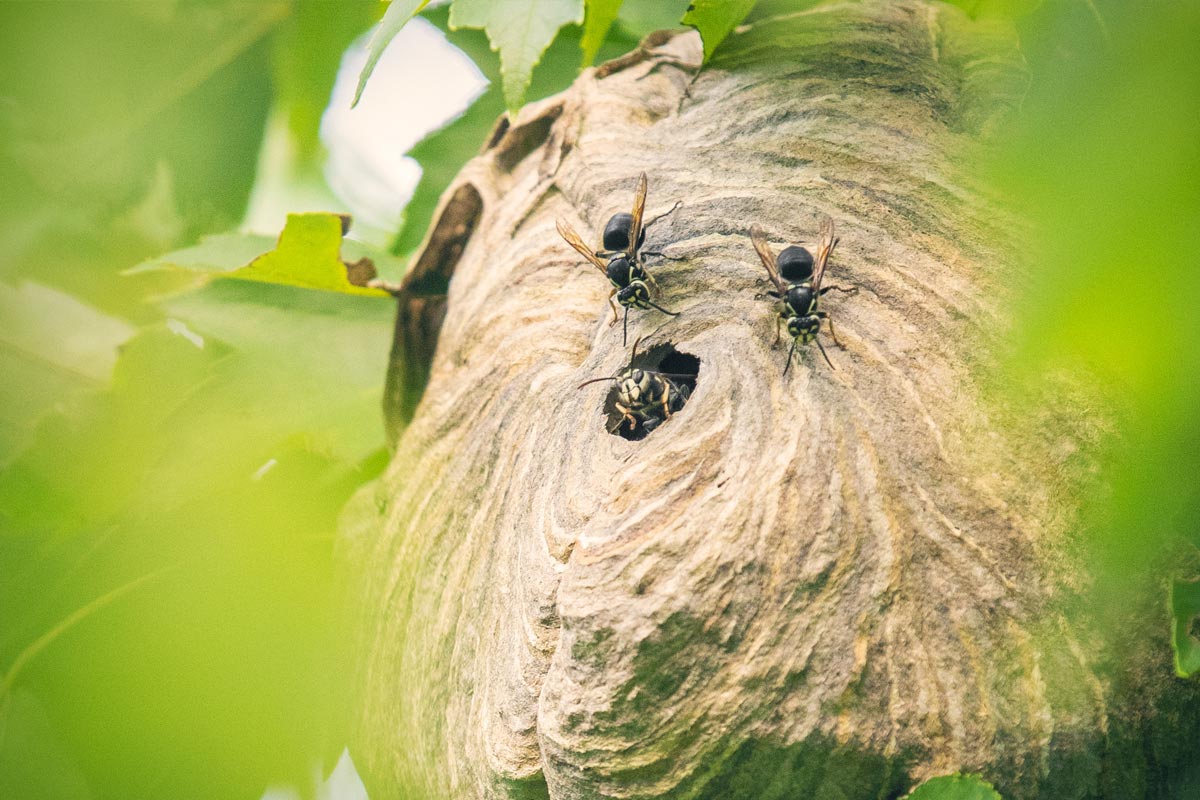
Hornets do not sting unless provoked. However, it will be prudent to remove a hornet's nest if it is situated in your home, building, and other structures that people frequent. When they are disturbed or feel threatened, hornets can be very aggressive and can sting multiple times.
Their sting has a venom that will make the skin swell, hurt, and itch. It can also cause an allergic reaction and might be necessary to take medication. The sting itself is not dangerous but more painful than a bee's sting and extremely uncomfortable.
What makes it dangerous is the allergic reaction from the venom and the possible infection from the wound and swelling.
There are several ways to remove a hornet's nest if it poses danger to people within the vicinity. Some will use spray insecticides, wasp traps, or a decoy.
View more details about this Wasp Out decoy nest on Amazon.
Some of the areas where bald-faced hornets build their nests include hedges, inside of a barn, on the roof, under carports, on lamp posts, sides of houses, attics, tree hollows, and shrubs.
If the nest becomes dangerously close to your home, you can protect your family by spraying insecticides that are specifically for wasps and hornets. However, there is a technique, timing, and proper protective gear to use if you're going this route.
Seek the help of a professional pest control to be sure.
Check out this Raid Wasp & Hornet Killer on Amazon.
Once the nest has been sprayed with pesticide, the inhabitants inside will be eliminated. The worker hornets that were gathering food far from the nest will soon return.
However, the scent and remnants of the spray will also eliminate them once they return. To be safe, don't remove the nest the same day after spraying. Wait a day or two to make sure all the returning hornets have been eradicated.
What Animals Eat Hornets?
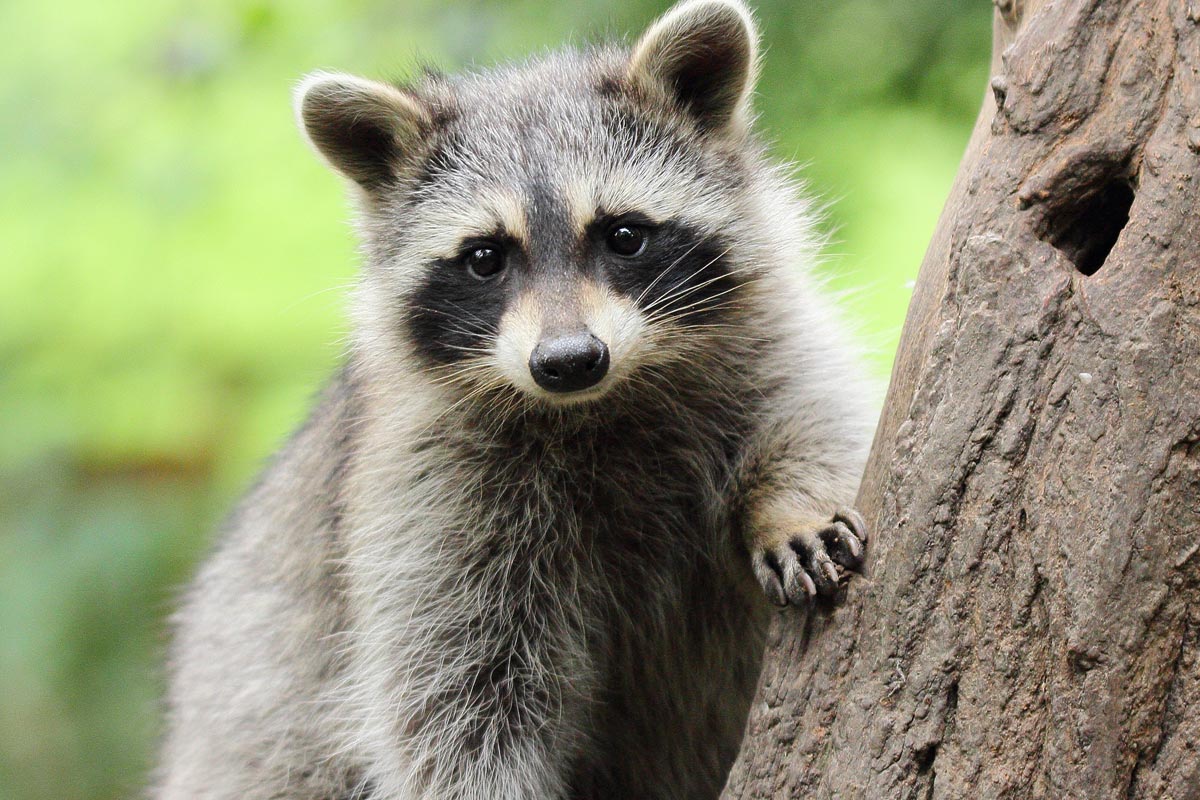
As all animals in the world have a purpose and in an attempt to repeat the cycle of life, it may have crossed your mind to eliminate the hornets through natural causes. Several species of frogs, lizards, spiders, hedgehogs, birds, and bats eat hornets. However, these animals are similarly not ideal to keep around just to get rid of the hornets.
There are several animals that will try to get the nest itself in order to taste the larvae which is delicious to their palate. These brave animals include the skunks, raccoons, mice, and rats. the wasp-eating falcon is also known to snatch nests from trees and bring them home to its nest to feed young chicks.
Takeaway
To wrap things up, it is important to note that there can be as many as 700 hornets in one nest. So when you see a nest, stay away from it because they can be very aggressive when provoked. If the nest is in your home, contact an exterminator to handle the nest removal safely.
Thank you for reading through. We hope you learned a thing or two about the bald-faced hornet's population, colony cycle, and behavior. Do browse our site to read more about garden pests, household pests, and pest control methods.



